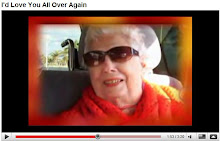
Stories of Lives Lived and Now Ending
Inquiring Mind, Spring 1994, vol. 10, no. 2
as told by Frank Ostateski, edited by Barbara Gatesphotographs by Raja Hornstein
Inspired by a 2500-year-old spiritual tradition, Zen Hospice Project encourages and supports a mutually beneficial relationship among volunteer caregivers and individuals, facing death. Volunteers work in San Francisco both at the Guest House, a home-like residence providing 24-hour care, and at Laguna Honda Hospice, a 28-bed hospice and AIDS unit, located in the nation's largest public long-term care facility.
Each caregiver cultivates the "listening mind "through regular meditation or spiritual practice. This helps to develop the awareness, compassion and balance to respond to the needs of the dying and to hear their stories.
Frank Ostaseski, Founding Director of Zen Hospice Project, says, "As hospice workers, one of our central tasks is to be available when stories are ready to be told."
Recently, the Hospice has begun an' Oral History Project in which the volunteers support people who are dying in telling their stories. A volunteer either writes down a story in the form of a letter or, more commonly, records it. These stories are then sent to friends and family.

Adele was an old Russian, Jewish woman staying with us at the hospice. I got the call that she was dying and came to her room to find her curled over in bed, gasping for a breath. Her eyes were wide open with fear. An attendant tried to reassure her, "You don't have to be frightened." And Adele replied through her gasps, "If it was happening to you, you'd be frightened. Believe me."
The attendant began stroking her while she continued to heave. "You're awfully cold," the attendant said. And Adele, again through her gasps, replied, "Of course I'm cold. I'm almost dead!"
As I began to attend to her, I listened closely to try to understand what was actually needed. While she was gasping for the air, she was suffering. While she was pushing out the air, she was suffering. In the middle, right in between the breaths, was the place of relief.
I said simply, "There's a place to rest right there. Can you feel it?" In that moment, her attention went to that place, the in-between place. And, for an instant, she rested there. It was as if something washed over her face; her eyes softened and the fear dissipated. She took four or five more breaths and she died.
At Zen Hospice Project, we act with minimal intervention and attempt to meet whatever is arising in front of us. There's a place to rest right there. Can you find it?" That was all I said. And she did everything else. She was honest and straightforward in her process all the way.
 Stories of Lives Lived and Now Ending
Stories of Lives Lived and Now Ending


















No comments:
Post a Comment